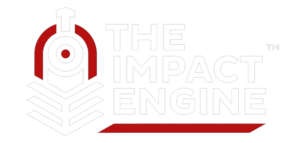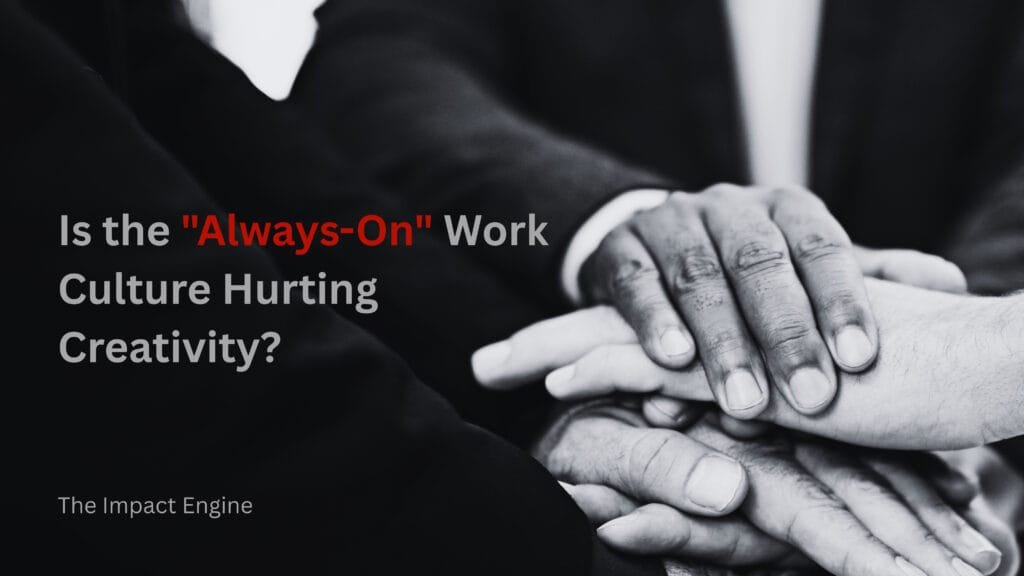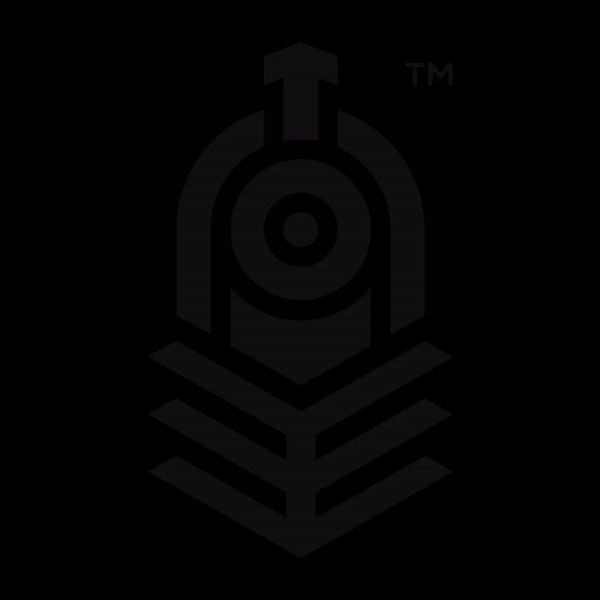In today’s fast-paced, digitally-connected world, the pressure to always be available and responsive is higher than ever. At TIE, we work with some of the brightest minds in marketing, but we also see firsthand the negative effects of the “always-on” work culture. It’s a common narrative: work hard, stay connected, and hustle 24/7. But is this constant state of being “on” really driving creativity and success? Or is it actually stifling the very thing that marketing agencies rely on—innovation and creative thinking?
Let’s break down the uncomfortable truth about the “always-on” work culture and how it may be hurting your team’s creativity.
- The Pressure to Be Available 24/7 Is Stifling Creative Energy
With constant notifications, emails, and messages, it’s easy to feel like you need to be available at all hours. After all, the work never stops, and clients expect quick responses. However, this “always-on” culture doesn’t give employees the time or mental space they need to truly think creatively.
Creativity thrives in moments of peace and quiet, not in a constant state of stress or distraction. When you’re perpetually on edge, your brain never gets the chance to enter the state of flow needed for deep creative thinking. That’s when ideas are born—during moments of rest, reflection, and focus. Without this time, your team might struggle to think beyond the immediate tasks at hand. - The Myth of Multitasking and Constant Hustle
We’ve all heard it: “Successful people multitask and work non-stop.” This myth has become ingrained in our culture, especially in fast-paced industries like marketing. But here’s the uncomfortable truth—multitasking isn’t as productive as we think. In fact, it can actually lower the quality of our work.
When your team is constantly juggling multiple tasks, it’s easy for creative ideas to get lost in the shuffle. The time spent shifting focus from one task to another can lead to a decrease in quality, and the brain simply doesn’t have the bandwidth to generate high-level, innovative ideas under constant pressure. In marketing, where creativity is king, this can be a death sentence for great campaigns. - Burnout is the Hidden Cost of the Always-On Culture
The “always-on” mentality may seem like a badge of honor in many industries, but in reality, it’s a recipe for burnout. When people are constantly expected to be working, responding, and engaging, it’s not long before their energy and passion for their work begin to wane.
Burnout is not only a personal problem but also a company-wide issue. It affects morale, reduces productivity, and, most importantly, it destroys creativity. A burnt-out team is a drained team, and drained teams cannot produce their best work. In a marketing agency, where fresh ideas are critical, a burned-out team means stagnant campaigns and missed opportunities. - Lack of Downtime = Lack of Innovation
It’s simple: no downtime means no new ideas. Innovation doesn’t just happen when you’re working overtime. It happens when your brain has space to wander, when you’re able to step back from the daily grind and look at problems from a different angle.
Without taking breaks and allowing your mind to recharge, creativity becomes reactive rather than proactive. That means your agency could end up relying on outdated ideas and recycled concepts instead of truly groundbreaking campaigns. The “always-on” culture might give the illusion of productivity, but in reality, it’s a creativity killer. - What Can Agencies Do to Break the Cycle?
So, what can marketing agencies like TIE do to break free from this detrimental “always-on” culture? The solution isn’t as simple as telling employees to turn off their phones and disconnect entirely. It’s about fostering a culture that values creativity, deep work, and personal well-being.
- Encourage Deep Work: Encourage your team to set boundaries for deep work. Allow uninterrupted time to focus on high-level tasks without the distractions of emails and meetings.
- Promote Flexibility: Acknowledge that creativity isn’t tied to a 9-to-5 schedule. Provide flexibility and encourage employees to take time off or work remotely when necessary to refresh and recharge.
- Build a Culture of Trust: Create an environment where employees feel trusted to manage their work without feeling the need to constantly check in. When your team feels trusted, they can give their best ideas without fear of burnout.
- Foster Collaboration, Not Competition: Ditch the “hustle culture” that fosters unhealthy competition. Instead, encourage collaborative brainstorming and problem-solving where creativity can flow freely without the fear of judgment or criticism.
- Lead by Example: Leadership sets the tone for the culture. If managers and leaders are always online and always working, this will trickle down to the team. Lead by example—set boundaries, encourage breaks, and make time for creativity to thrive.
- The Bottom Line: Work-Life Balance Equals Creative Power
In the end, the “always-on” culture is a myth that doesn’t benefit anyone in the long run. A team that’s constantly on the clock can’t sustain creativity, and a business that doesn’t value rest will eventually see a drop in performance and innovation.
To foster a truly creative environment, agencies need to embrace the idea that sometimes stepping away is just as valuable as being “on.” After all, some of the best ideas come when you least expect them—during a walk outside, a coffee break, or simply taking a moment to pause and reflect.
At TIE, we’ve learned that creativity thrives in an environment that respects both hard work and downtime. So, if you want better results, it’s time to turn off the “always-on” mentality and give your team the space to think, create, and thrive.


